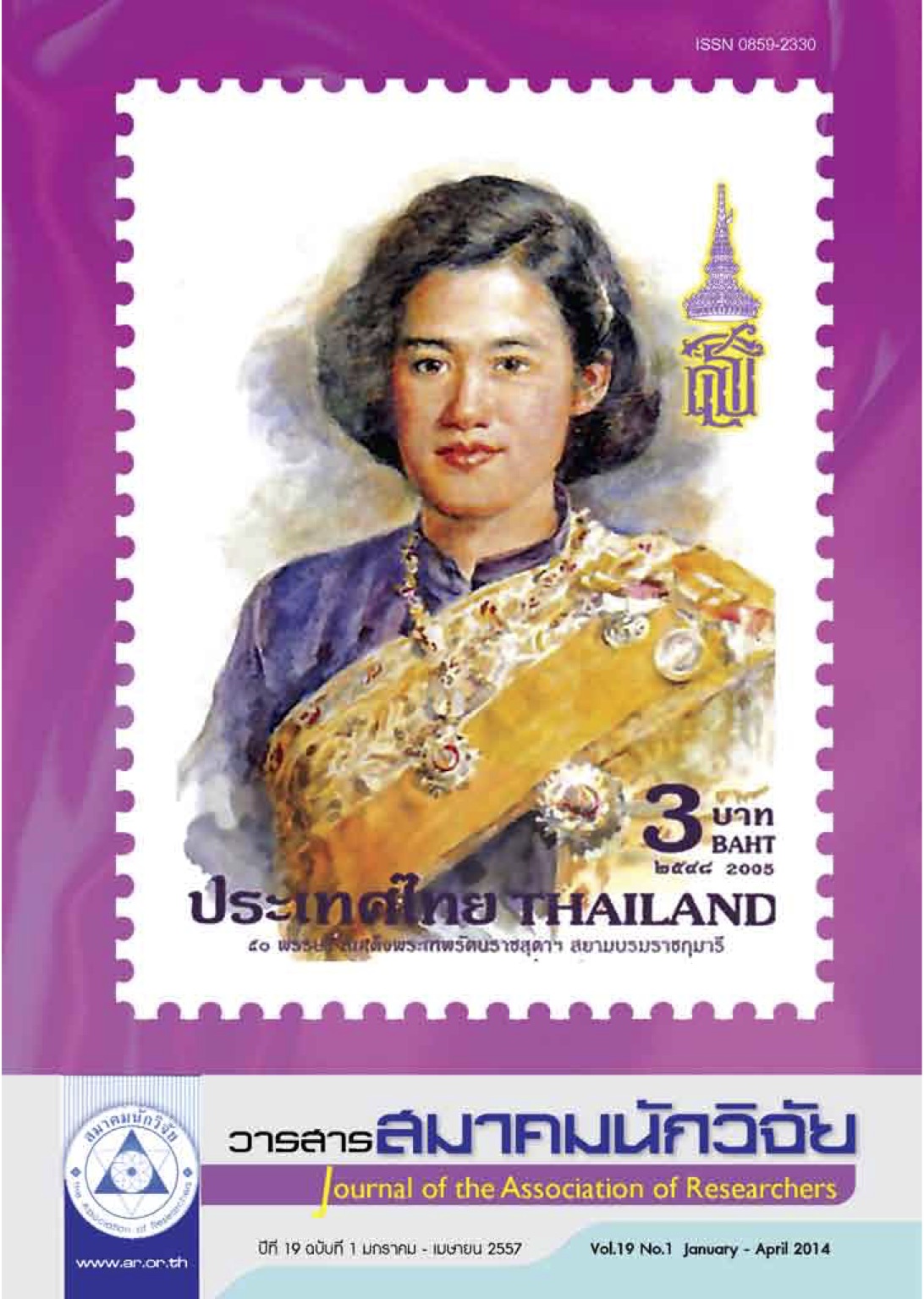THE MANAGERIAL ADMINISTRATION EFFECTIVENESS OF GOOD SCHOOLS IN THE SUB-DISTRICT REGION IN THAILAND
Main Article Content
Abstract
The main objectives of this study were to investigate effectiveness, confirmatory factors, and the structural equation model with the managerial administration effectiveness of Good Schools in the Sub-District Region (GSSDR) in Thailand. Data from 506 subjects of a questionnaire form (with both high of validity and reliability coefficients) of school directors, school committees, and teachers were drawn by a multi-stage random sampling. The following statistics were applied: frequency, percentage, means, standard deviation, confirmatory factor analysis, and path analysis. Research results revealed that: 1) The effectiveness of all components and factors of this study were at the high to very high level when comparing with the established criteria; 2) Almost components of each factor with the managerial administration effectiveness of the GSSDR in Thailand (standardized factor leads > 0.70 and p < .05) were as crucial confirmatory components, except the two components of the managerial administration effectiveness factor, namely students dimension and teachers and personnel dimension, were not the crucial confirmatory components; and 3) The structural equation model was confirmed with statistical assumptions as Chi-square = 68.12, df = 67, p-value = 0.43896, และ RMSEA = 0.013, it concluded that the model had an appropriateness and related with the empirical data. It could be explained in term of causal relationship as follow: The GSSDR in Thailand with high managerial administration effectiveness, most of them got the high positive direct effects from the 3 following factors, namely managerial administration, policy and structure, and leadership of administrators. Moreover, most of them got the positive indirect effect from the factor of participation through the factor of managerial administration. It was also found that all these factors could be predicted the managerial administration effectiveness of the GSSDR at the 89.90 percent and at the .05 level of significance.
Article Details
บทความที่ปรากฏในวารสารนี้ เป็นความรับผิดชอบของผู้เขียน ซึ่งสมาคมนักวิจัยไม่จำเป็นต้องเห็นด้วยเสมอไป การนำเสนอผลงานวิจัยและบทความในวารสารนี้ไปเผยแพร่สามารถกระทำได้ โดยระบุแหล่งอ้างอิงจาก "วารสารสมาคมนักวิจัย"
References
กนกอร บุญมี (2555). “แบบจำลองการฝึกอบรมความรู้ แบบ ดูอัล เฟิร์มมาเมนท์ ขององค์กรฝึกอบรมบุคลากรใน ภาคตะวันออกเฉียงเหนือ ของประเทศไทย,” วารสารสมาคมนักวิจัย, 17(1มกราคม – เมษายน), 55-68.
เกตุสุเดช กำแพงแก้ว. (2547). การศึกษากิจกรรมรูปแบบการมีส่วนร่วมของผู้ปกครองในการจัดการศึกษาของ โรงเรียน: กรณีศึกษาโรงเรียนอัสสัมชัญแผนกประถม. ปริญญานิพนธ์ปริญญาการศึกษาดุษฎีบัณฑิต สาขา วิชาการบริหารการศึกษา บัณฑิตวิทยาลัย มหาวิทยาลัยศรีนครินทรวิโรฒ.
ตนิ ปรชัญพฤทธ.ิ์ (2532). ภาวะผนู้ำและพฤตกิรรมการมสีว่นรว่ม. นนทบรุ:ี มหาวทิยาลยัสโุขทยัธรรมาธริาช.
ยุวดี ศันสนียรัตน์. (2549). การบริหารการจัดการที่สถานศึกษาฉบับสรุป (School-based management). สำนักงานปฏิรูประบบการศึกษา สำนักงานคณะกรรมการการศึกษาแห่งชาติ.
สมชาย พุทธโกสัย. (2555). คุณภาพการบริหารจัดการสถานศึกษาระดับประถมศึกษาในเขตตรวจราชการที่ 2 กระทรวงศึกษาธิการ. ดุษฎีนิพนธ์สาขาวิชาการบริหารการพัฒนาองค์การ มหาวิทยาลัยเจ้าพระยา.
สุทธนู ศรีไสย์. (2551). สถิติประยุกต์สำหรับงานวิจัยทางสังคมศาสตร์. กรุงเทพมหานคร: คณะครุศาสตร์จุฬาลงกรณ์มหาวิทยาลัย.
สำนักงานคณะกรรมการการศึกษาขั้นพื้นฐาน. (2553 ). คู่มือดำเนินงานโรงเรียนดีประจำตำบล. กรุงเทพ มหานคร: โรงพิมพ์ชุมนุมสหกรณ์การเกษตรแห่งประเทศไทย.
เสาวณี ทิพย์วารี. (2550). การบริหารโดยใช้โรงเรียนเป็นฐานที่ส่งผลต่อผลสัมฤทธิ์ทางการเรียนระดับประถมศึกษา. วิทยานิพนธ์ปริญญาครุศาสตรมหาบัณฑิต สาขาวิชาการบริหารการศึกษา บัณฑิตวิทยาลัย มหาวิทยาลัยราชภัฏ นครศรีธรรมราช.
Fiedler, F. E. (1967). A theory of leadership effectiveness. New York: McGraw-Hill.
Kline, R. B. (1998). Principles and practice of structural equation modeling. New York: Guild. Parsons, T. (1951) The social system, Glencoe, Illinois: Free Press
Sammonds, P., Hillman, J., & Mortimore, P. (1995). Key characteristics of effective schools: A review of school effectiveness research. A report by the institute of education for the office for standards in education.
Steiger, J. H. (1990). “Structural model evaluation and modification: An internal estimation approach,” Multivariate Behavioral Research, 25(2), 173-180.
Ullman, J. B. (2001). “Structural equation modeling.” In B.G. Tabachnick, and L.S. Fidell. Using Multivariate Statistics, (4th ed.), 653-771. New York: Allyn & Bacon.


